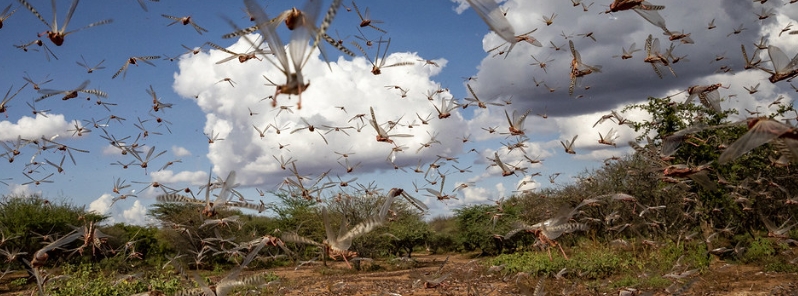Locust plague spreads to Europe as Sardinia sees worst attack in 70 years, Italy

After ravaging countries in Africa, the Middle East, and India, swarms of locust have now made their way to Europe as the Italian region of Sardinia recently saw its worst attack in 70 years. Around 30 000 ha (74 000 acres) of crops have been affected in Nuoro City alone, according to the Italian Journalist Agency (AGI).
"When the locusts arrived in mid-May, my cabbages were small, it wasn't harvesting time yet, they were all still in the field. Then the swarm came through, started to devour all the leaves, leaving only the stem," a Sardinian farmer named Giovanni said.
"Instead of abandoning the crop to them, I preferred to pick it in advance and donate it to a charity for people in need." Giovanni's farm, along with 200 others, has been affected by the plague, which has destroyed fields, grasslands, pastures, and invaded gardens.
"The locusts feed on the most protein-rich part of the plants, so once the swarm enters the hayfield, there is nothing left for the flock," said Alessandro, a local shepherd. "I can see it from the seagulls roaming my land: they come here to look for locusts and find plenty of them."
In Nuoro City, eastern-central Sardinia, locusts have been ravaging the Tirso Valley and has so far affected 30 000 ha (74 000 acres).
The most affected companies are in the municipalities of Ottana, Orotelli, Oniferi, Orani, Illorai, Bolotana, Silanus, and Sedillo, AGI reported. The insects have also arrived in a part of the Escalaplano countryside.
The region is now facing its worst locust invasion in 70 years, according to World Bank. Ottana mayor Franco Saba said preventive actions have been taken to prevent the attack from happening again in the next few years. He added that current damages will be compensated.
In an update by the UN Food and Agriculture Organization (FAO) on July 21, it warned that the risk of swarm migration from the Horn of Africa prevails.
Control operations continue in Ethiopia and Somalia, but swarms are expected to continue to migrate across the Indian Ocean, reaching summer breeding areas along both sides of the Indo-Pakistan border.
Breeding continues in Yemen, while mature solitarious adults are still present in Sudan. Control operations are in progress in Oman, Pakistan, and India.
Experts are calling for international joint effort, fearing locust plagues could trigger food shortages across the world.
Featured image credit: FAO Emergencies

You can eat locusts : P
July 29 2012 to July 19 2013 / 2014/ 2015/2016*/2017/2018/2019/2020*
360 × 7 =2520 ÷ 10=252÷10=25.2
It looks like the time could really be up this time,” you think?